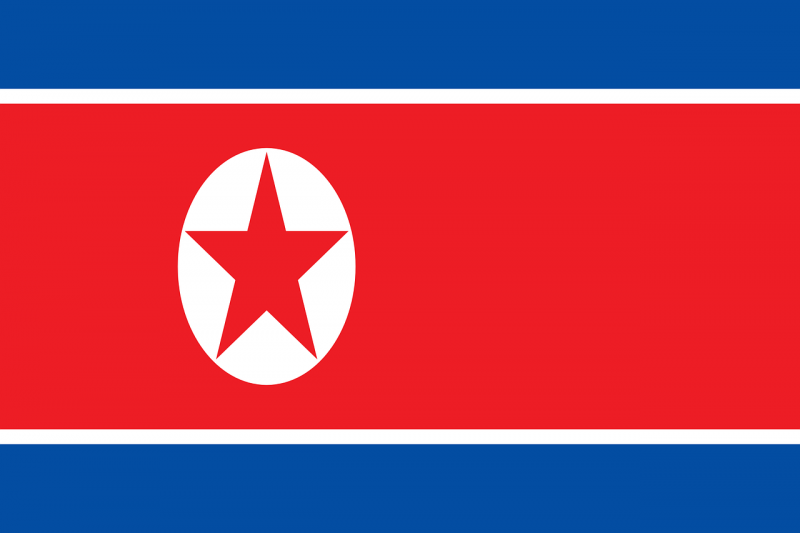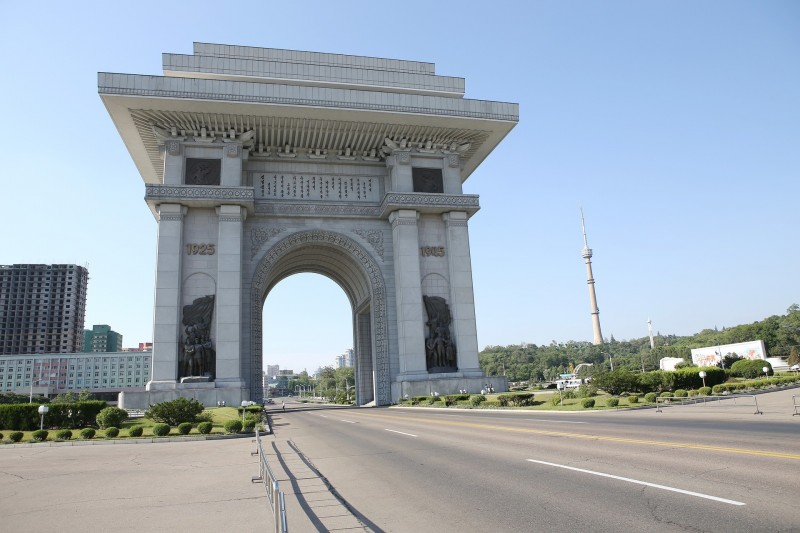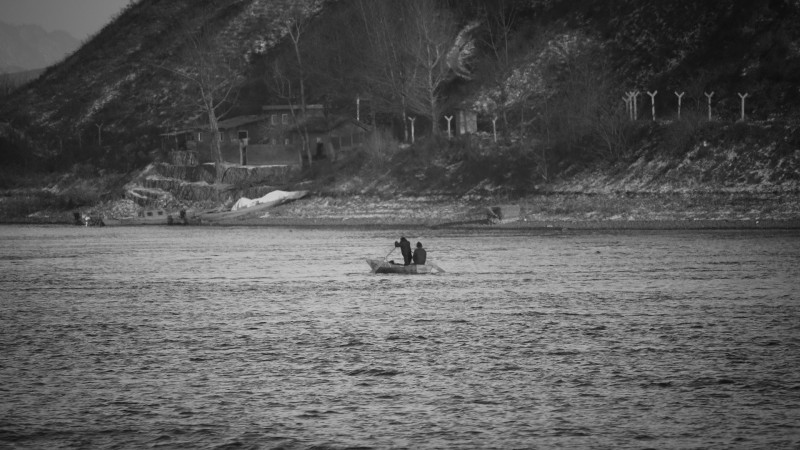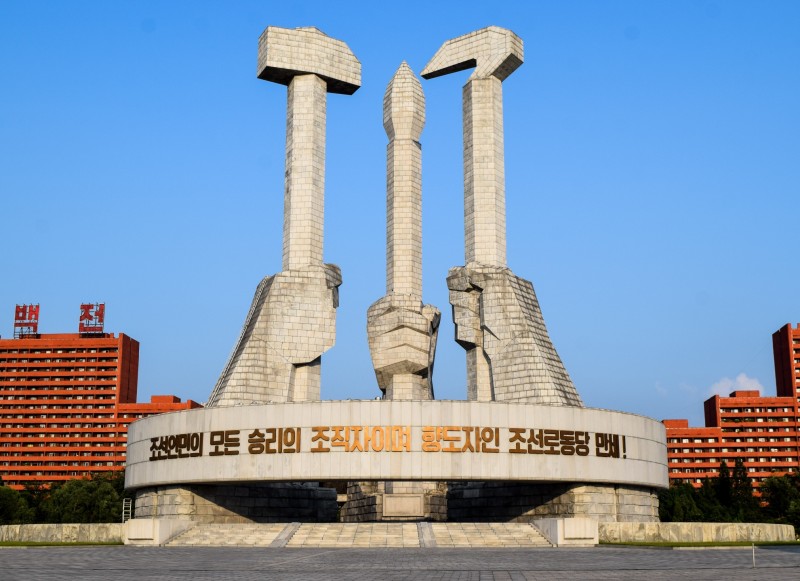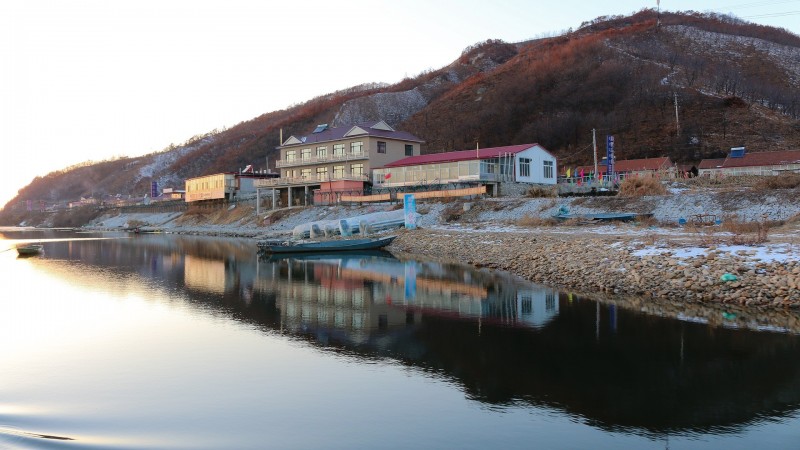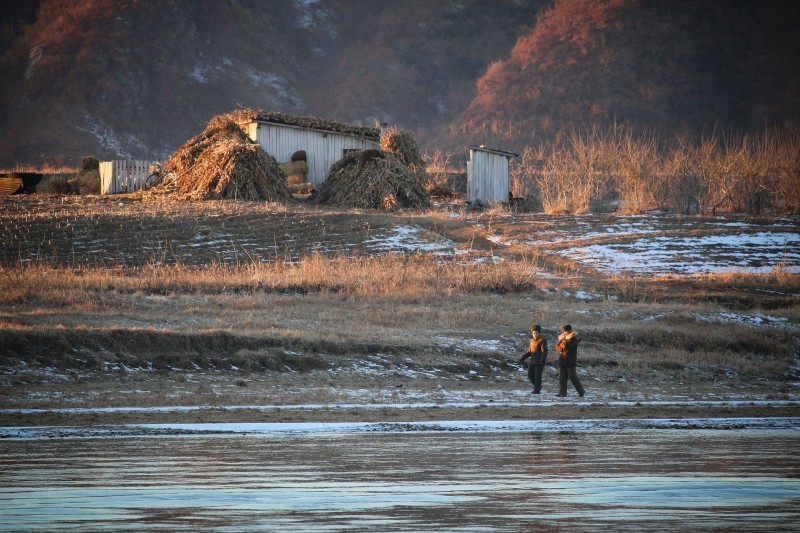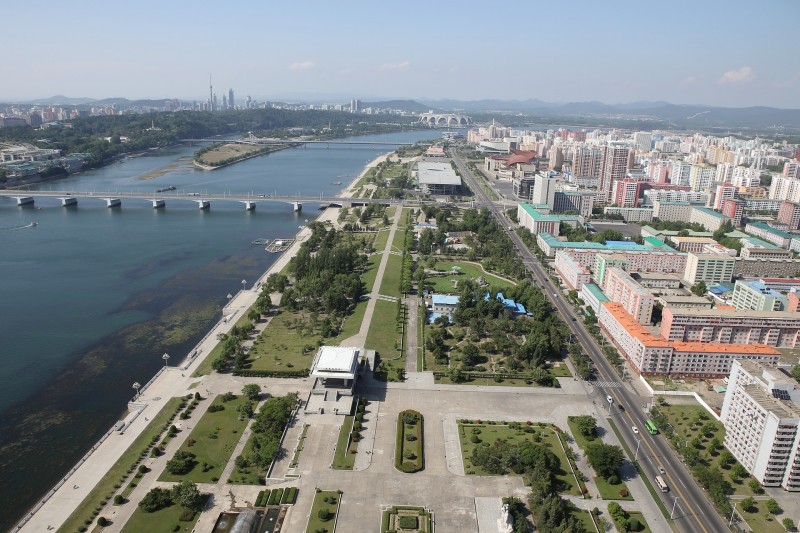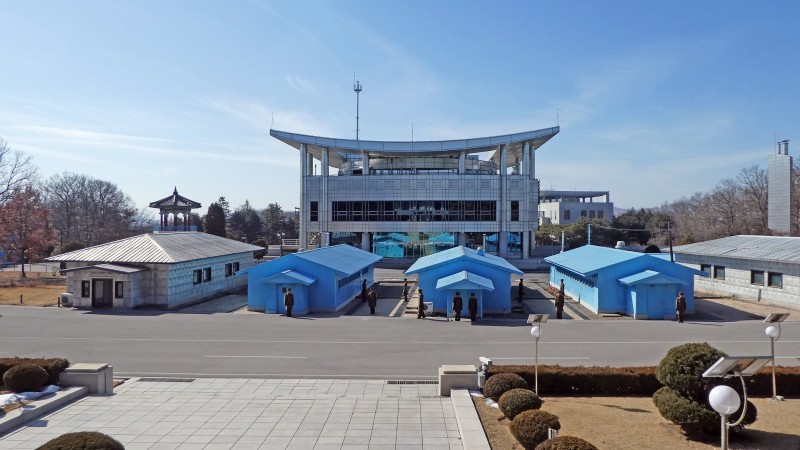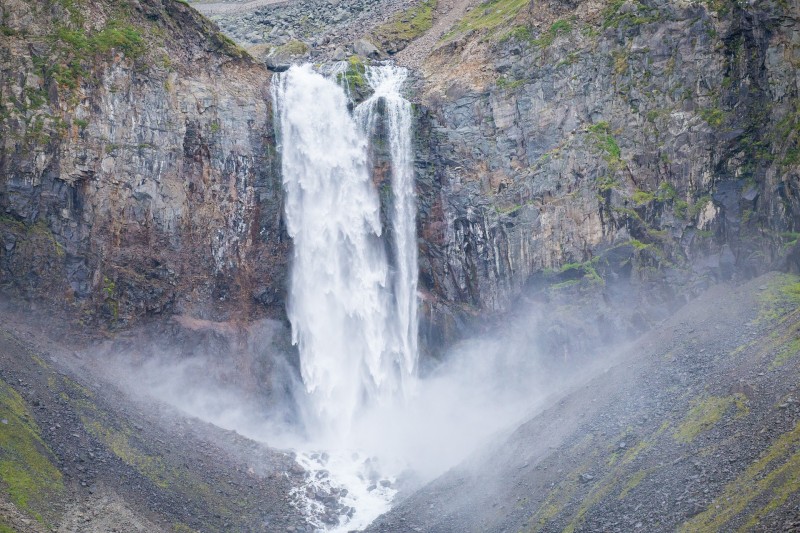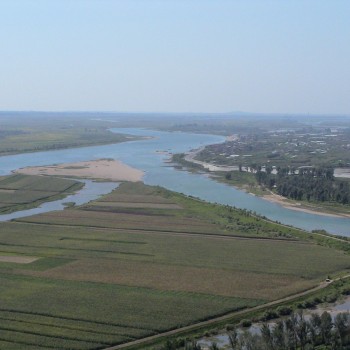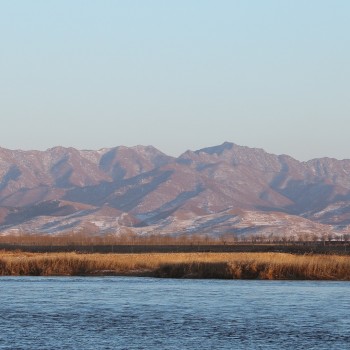North Korea
North Korea
Capital city description
Pyongyang is the capital of North Korea, which means 'flat land.' In a very mountainous country like North Korea, North Korea is full of mountains, so flat land makes a lot of sense for a capital city! Situated along the Taedong River and only 35 km from the Korean Bay, it was built in 1122 BCE on the old capital of the Chinese dynasty of heavenly King Dangun. The grave of the Chinese sage Kija, who founded the city, lies in the city's northern suburbs.
Climate
The climate in North Korea is continental, with freezing winters and hot, rainy summers. It has four distinct seasons, with summer and winter lasting for long periods. The country is affected by the monsoon circulation: during winter, the cold northwest wind of Siberian origin prevails, while in summer, succeeded by southern currents of tropical origin. Being surrounded by the waters of Korea Bay in the west and the Sea of Japan in the east influences the humidity in the country.
- Summer: June to September
- Autumn: October to November
- Winter: December to April
- Spring: Mid-April to May
Languages spoken
The Korean language is the official and national language of North Korea. Formally called Chosono or Chosonmal in North Korea, the term “Korean” derived from the word “Goryeo” pertains to the 1st dynasty known to Western civilizations.
Fun/Fascinating Facts
- Using Marijuana is legal in North Korea. It is not even classified as a drug in the country.
- North Korea’s second supreme leader – Kim Jong-il – and Kim Il-sung died on July 8 and December 17, respectively. Sadly, birthday on those particular days is not allowed to celebrate in North Korea.
- North Korea does not use the Gregorian calendar, also known as the Western and Christian calendars. They have their calendar in place. The Juche calendar was introduced in 1997 and is based on Kim Il-Sung’s date of birth: April 15, 1912.
- The North Korean city of Pyongyang has the world’s largest stadium, possessing a seating capacity of 150,000. This stadium is used for football, athletics, and mass games.
- Christmas is a nonevent in North Korea. Instead of Christmas celebrations, many North Koreans celebrate the birth of current president Kim Jong-il’s mother on December 24.
Unique Customs/Traditions
- Gifts have remained an influential part of Koreans' culture. The quantity or numbers also add meaning to your offerings; seven is considered a lucky number, anything in multiples of seven will be accepted heartily. However, they avoid giving anything that falls in the multiple values of four because Koreans view four as an unlucky number. Red, yellow and pink colors symbolize happiness and prosperity in Korean culture. The use of white, black or green colors for wrapping is offensive and must be avoided.
- Hanbok is traditional Korean attire typically worn in marriage ceremonies, family celebrations, and traditional festivals. It is also the national dress worn with pride by people of all ages as it represents part of their cultural identity.
- Doljabi is a Korean ritual, whereas when a child turns one year old, they are placed in front of a table of objects and encouraged to choose one. It is believed that the thing selected will predict the child's future.
- Traditionally, dining and eating mean following strict rules in North Korea. No indoor farewells, the removal of shoes before entering the house or dining room, and most importantly, only male hosts will serve the drinks.
- A Korean marriage does not mean the union of two individuals only but the joining of two families and two different lifestyles. Matchmaking with the help of matchmakers, wedding parade on a pony, bowing to the family members, couple drinking from the same cup, and the bridal procession are the significant traditional rituals of Korean marriage.
Popular universities
| Name | Description | |
|---|---|---|
| Pyongyang University of Science and Technology | Pyongyang University of Science and Technology is a non-profit public higher education institution located in the metropolis of Pyongyang, founded in 2010. Officially recognized by the Ministry of Education of North Korea, Pyongyang University of Science and Technology (PUST) is a tiny coeducational North Korean higher education institution. Pyongyang University of Science and Technology (PUST) offers courses and programs leading to officially recognized higher education degrees in several areas of study. | |
| Kim Il Sung University | Kim Il Sung University is a non-profit public higher education institution located in the metropolis of Pyongyang. Established in 1946 and officially recognized by the Ministry of Education of North Korea, Kim Il Sung University is a large, coeducational North Korean higher education institution. Kim Il Sung University offers courses and programs leading to officially recognized higher education degrees such as bachelor's degrees, master's degrees, doctorate degrees in several areas of study. | |
| Kim Chaek University of Technology | The Kim Chaek University of Technology is a non-profit public higher education institution located in the metropolis of Pyongyang. Founded in 1948 and officially acknowledged by the Ministry of Education of North Korea, Kim Chaek University of Technology is a large coeducational North Korean higher education institution. The Kim Chaek University of Technology offers courses and programs leading to officially recognized higher education degrees in several areas of study. | |
| Chongjin University of Pedagogy | The Chongjin University of Pedagogy is a non-profit public higher education institution located in Chongjin, North Hamgyong. Officially recognized by the Ministry of Education of North Korea, Chongjin University of Pedagogy is a coeducational North Korean higher education institution. The Chongjin University of Pedagogy offers courses and programs leading to officially recognized higher education degrees in several areas of study. | |
| Pyongyang University of Agriculture | Pyongyang University of Agriculture is a non-profit public higher education institution located in the metropolis of Pyongyang. Established in 1981 and officially recognized by the Ministry of Education of North Korea, Pyongyang University of Agriculture is a coeducational North Korean higher education institution. Pyongyang University of Agriculture offers courses and programs leading to officially recognized higher education degrees in several areas of study. | |
| Koryo Songgyungwan University | Koryo Songgyungwan University is a non-profit public higher education institution located in the small city of Kaesong North Hwanghae. Founded in 1992 and officially recognized by the Ministry of Education of North Korea, Koryo Songgyungwan University is a coeducational North Korean higher education institution. Koryo Songgyungwan University offers courses and programs leading to officially recognized higher education degrees in several areas of study. | |
| Hamhung University of Chemical Industry | The Hamhung University of Chemical Industry is a non-profit public higher education institution located in the large city of Hamhung, South Hamgyong. Founded in 1947 and officially recognized by the Ministry of Education of North Korea, Hamhung University of Chemical Industry is a North Korean coeducational institution. The Hamhung University of Chemical Industry offers courses and programs leading to officially recognized higher education degrees in several areas of study. | |
| Pyongyang University of Foreign Studies | Pyongyang University of Foreign Studies is a non-profit public higher education institution located in the metropolis of Pyongyang. Established in 1961 and officially recognized by the Ministry of Education of North Korea, Pyongyang University of Foreign Studies is a coeducational North Korean higher education institution. Pyongyang University of Foreign Studies offers courses and programs leading to officially recognized higher education degrees in several areas of study. | |
| Koryo Songgyungwan University | Koryo Songgyungwan University is a non-profit public higher education institution located in the small city of Kaesong, North Hwanghae. Founded in 1992 and officially recognized by the Ministry of Education of North Korea, Koryo Songgyungwan University is a coeducational North Korean higher education institution. Koryo Songgyungwan University offers courses and programs leading to officially recognized higher education degrees in several areas of study. | |
| Hamhung University of Chemical Industry | The Hamhung University of Chemical Industry is a non-profit public higher education institution located in the large city of Hamhung, South Hamgyong. Founded in 1947 and officially recognized by the Ministry of Education of North Korea, the Hamhung University of Chemical Industry is a coeducational North Korean higher education institution. The Hamhung University of Chemical Industry offers courses and programs leading to officially recognized higher education degrees in several areas of study. | |
Festivals & Events
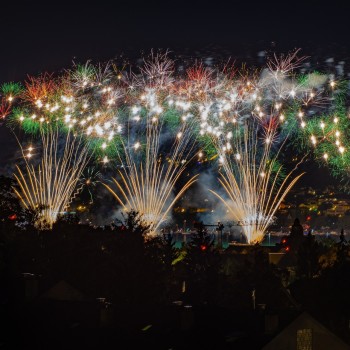
Jeju Fire Festival
Date: Late February and March
Jeju Fire Festival is one of the most prestigious festivals in Korea celebrated over three days in late February and March. The charming city of Jeju is set lighted to pray for and welcome the new year with good health, happiness, and ample harvest.
It signifies the ancient ritual of burning old grass to rid vermin before resuming the next farming season. It is a unique festival, and the sight of the hilly city on fire looks dazzling and striking. The festival is also celebrated with folk dance, torch march, and tribal games and activities.
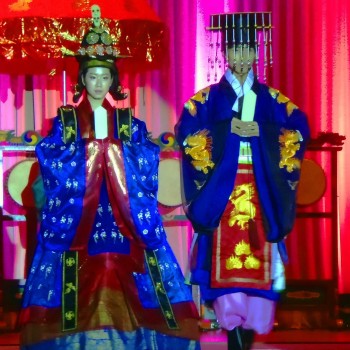
Day of the Sun
Date: 15th April
Day of the Sun celebrates the birthday of President Kim Il Sung, the founder of North Korea. It is the most extensive festival held annually on the 15th of April.
The celebration is typically marked with public mass dances, fireworks, the Kim Ilsungia Flower Festival, and the Spring Arts Festival.
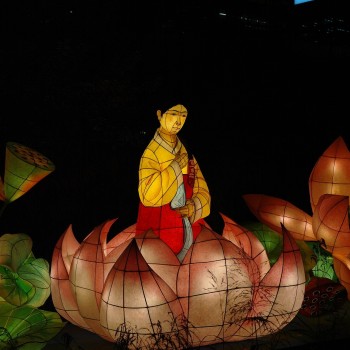
Jinju Lantern Festival
Date: 1st – 11th Oct
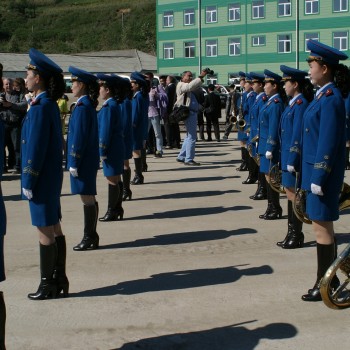
Day of the Shining Star
Date: 16th-17th FEBRUARY
One of the most important dates on their calendar is the Day of the Shining Star takes place on 16th February and has been celebrated in North Korea since 1982. This national holiday for North Koreans lasts for two days - not as long as celebrations for the Day of the Sun, but celebrations are similar.
The Kimjongilia flower, bred by Japanese botanists for Kim Jong Il, is cultivated to bloom on this date. Kim Jong Il is connected with the image of a star and can also be referred to as a 'shining star' or 'bright star.' According to the story, the night he was born on Mt Paektu (16th February 1942), a bright star shone in the sky.
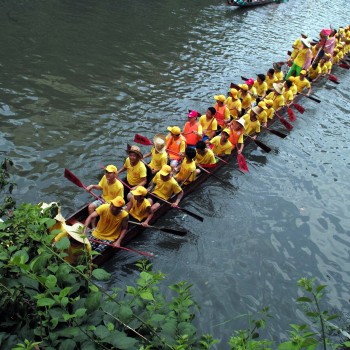
Dragon Boat Festival
Date: June
Dragon boat races are as popular in North Korea as in China, with the annual Dragon Boat Festival taking place at the beginning of spring in early June.
Dragon Boat Festival recognizes the death of the acclaimed Chinese artist Qu Yuan living in the last piece of the Warring States Period (476 - 221 BC). The Dragon Boat Festival was chosen as the National Intangible Cultural Heritage's primary clump on the 20th of May, 2006.
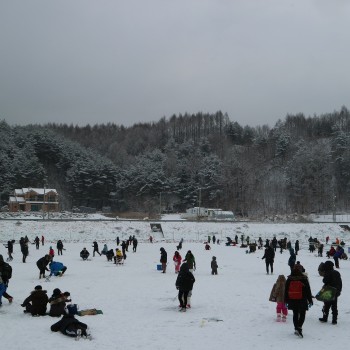
Hwacheon Sancheoneo- Ice Festival
Date: 9th Jan- 31st Jan
The Ice Festival is one of Korea's most famous winter festivals, celebrated widely in a frozen river of Gangwon Province of Hwacheon County. People walk through the sub-zero temperature for trout fishing. Some of them even catch fish with bare hands from the drilled ice holes. Snowman building, snow tunnel and snow slide building, ice sled, and ice soccer are some other activities that this festival truly enjoys.
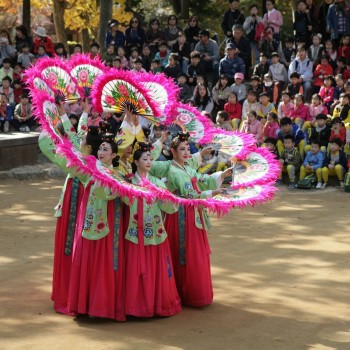
International Workers’ Day
Date: May 1
International Workers’ Day is celebrated in North Korea, as it is elsewhere in the world, people often gather in local parks to celebrate the holiday. The most popular is Mt. Taesong (Taesongsan) Park - to the northwest of Pyongyang. Dancing, drinking, and picnicking are all typical activities on the 1st of May in North Korea.
The outdoor activities and celebrations may even be more extravagant than other national holidays since the weather around April/May is pretty ideal.
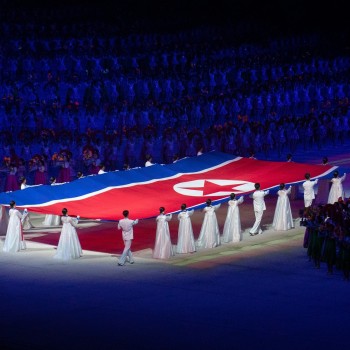
Victory Day
Date: July 27
Victory Day in North Korea is an excellent festival on July 27, marking the Korean War armistice's day. The celebration involved mass dancing and military parades. Victory Day is a great time to visit North Korea as the weather is beautiful, and the festive spirit has everyone in a pleasant mood! North Koreans go to parks and public squares to enjoy the summer weather and perform mass dances, a famous North Korean celebration activity.
Tourists in North Korea on Victory Day can dance with the locals in prestigious locations such as Kim Il Sung Square. There is also often the chance to join Pyongyangers as they picnic in places such as Moranbong Park.
Attractions / Top Sights
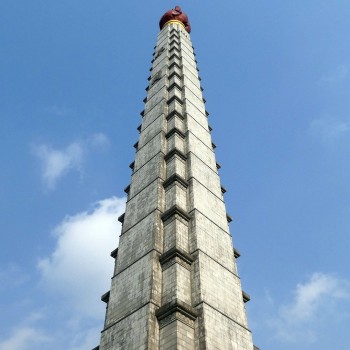
Juche Tower
When to visit: May to July / September to November
When to visit: https://www.lonelyplanet.com/north-korea/attractions
Grand Juche Tower was made to honor Kim Il Sung’s 70th birthday. From the viewing platform located just beneath the torch on the top of the tower, excellent views overlook Pyongyang. The viewing platforms can be accessed via an elevator.
The tower is composed of 25,500 blocks that correspond to Kim Il Sung’s 70 years. At the tower’s base is a 30-meter high statue of three figures united at the point of their triumphantly upheld arms. Each figure holds a different implement: a hammer, one a sickle, and the other have a writer’s brush. These tools are the emblems that collectively represent the Workers’ Party of Korea.
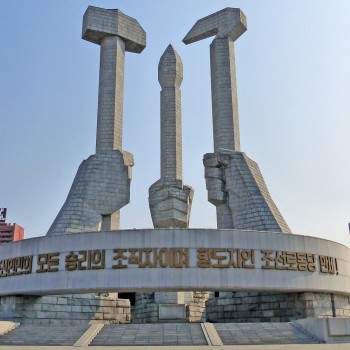
The Workers' Party Foundation Monument
When to visit: May to July / September to November
North Korea Monuments, commonly known as The Workers' Party Foundation Monument, is located directly across the Mansudae Grand Monuments at Munsu Street in Pyongyang, the capital of North Korea. It is a place used for Mass Dances during National Holidays. The Mass Dances involved hundreds of university students dancing in a synchronized way.

Arch of Triumph
When to visit: May to July / September to November
Arch of Triumph, North Korea’s arch, recognizes itself as the world’s tallest standing victory arch standing an impressive 60 meters high and 50 meters wide, 10 meters taller than the Arc de Triomphe in Paris. It opened in 1982 to commemorate Korea’s resistance to Japan between 1925 and 1945. The arch was inaugurated on the 70th birthday of Kim Il-Sung in recognition of his role in the opposition. Inside there are rooms and observation platforms.

Mount Paektu
When to visit: Late July to September
Mount Paektu, one of the most remarkable sights on the Korean peninsula, sits at the Chinese–Korean border in the very far northeastern tip of DPRK. Aside from being the country's highest mountain at 2744m (9000ft) and a unique geological phenomenon, it's also of substantial mythical importance to Koreans.
The natural beauty of the extinct volcano, now containing one of the world's deepest lakes, is made all the more magical by the mythology that surrounds the lake, both ancient and modern.
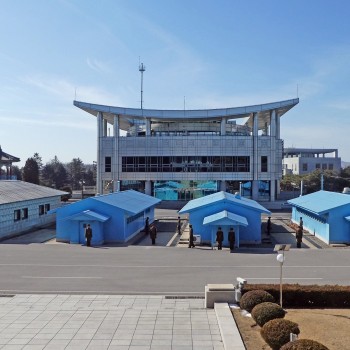
Demilitarized Zone
When to visit: October
The Demilitarized Zone is one of the most heavily armed borders globally yet attracts many visitors worldwide. The Demilitarized Zone serves as a natural habitat even for endangered species such as white-naped and red-crowned cranes. Lynxes and black bears are also to be found here, as are many fish species, not to mention wetlands and forests.
The peaceful and unspoiled natural surroundings deny entirely the nature of this man-made political boundary that has been here since after the Korean War. However, it must be said that it is a unique event for hostilities to take place.

Kim Il Sung Square
When to visit: May to July / September to November
Kim Il Sung Square is the most important Square in North Korea, located in the city center on the west side of the Taedong River. One hundred thousand people fit in the Square, and its area is 75,000 m². Known for holding mass rallies, demonstrations, and military parades, they portray thousands of North Koreans and their leaders.
Several government buildings surround it, and close-by landmarks include the Mansudae Grand Monuments, Fountain Park, the Grand People’s Study House, and the Foreign Language bookstore.
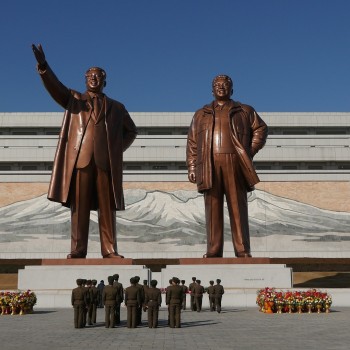
Mansudae Grand Monument
When to visit: May to July / September to November
The Grand Monuments of President Kim Il Sung, which glares into the horizon over Pyongyang, was erected on Mansu Hill in April 1972 in honor of his 60th birthday. Kim Il-Sung, distinguished as the ‘Great Leader,’ had this giant bronze statue erected to commemorate his rule even during his lifetime and eventually joined by a similarly remarkable figure of the ‘Dear Leader,’ Kim Jong Il.
It’s common practice here for people to memorialize their leaders by laying flowers down in this way. Before bowing in line, people arrange flowers at the foot of the gigantic bronze Mansudae statues concerning the Great Leaders in DPRK, President Kim Il Sung and Chairman Kim Jong Il.















